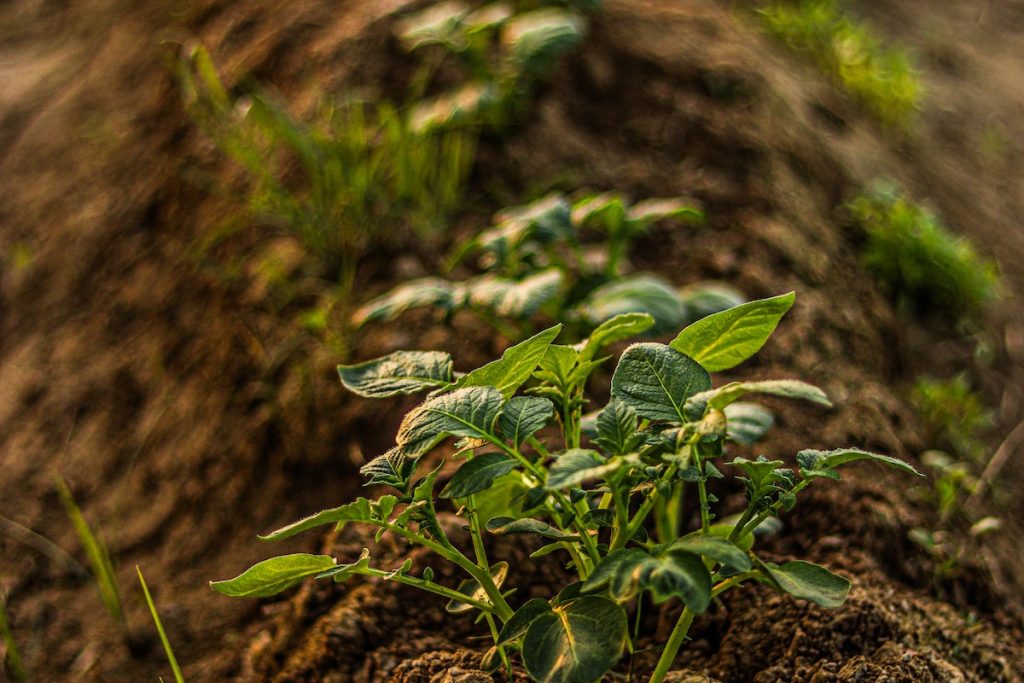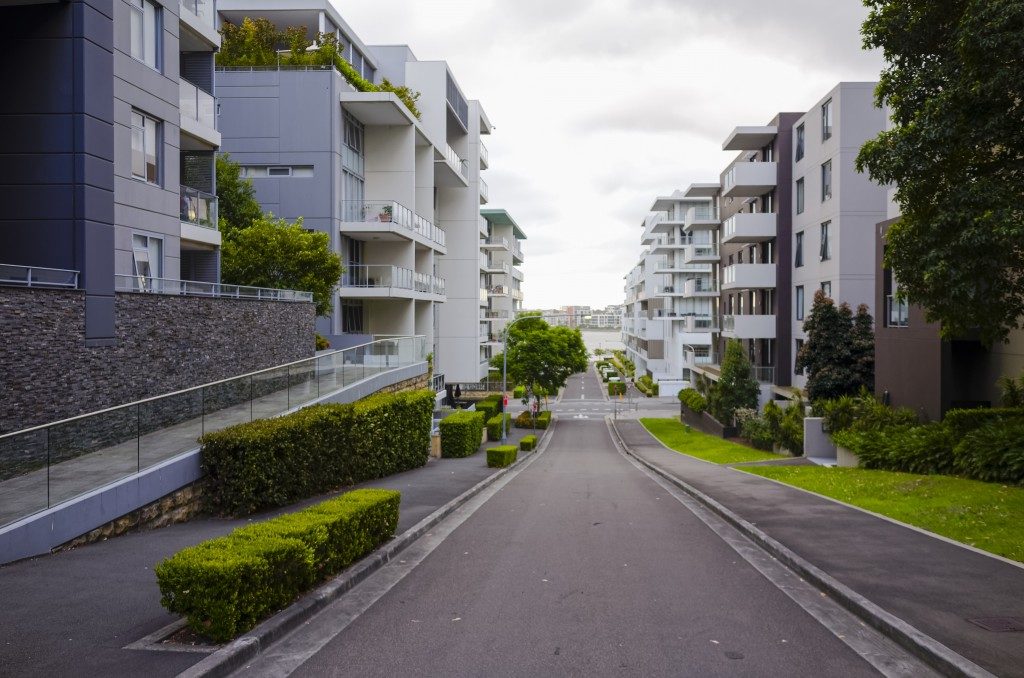- An herb planter is a container or a pot where you can grow herbs allowing water and air to circulate easily
- The best outdoor container size is between 6 and 18 inches
- The best materials for open-air planters are terracotta, cement, and wood
- Give your herbs sun, water them regularly, and treat them with love
You may not be a pro chef in an exclusive restaurant, but adding some herbs to your cooking will make the dishes taste better and different. Always having naturally grown herbs within reach is an asset for you and your kitchen.
You won’t have to go to the store on short notice for a special ingredient in your meal, especially if you have guests coming in. That is where a herb garden will turn out to be useful. You won’t find any store mint that will smell better than the one growing in your herb pots.
A great thing about having your outdoor herb garden is that it does not require a particular space or maintenance. You can place your culinary wonders in your yard or patio space with outdoor herb planters or grow herbs anywhere. Let’s do some herb planting!

- What Are Herb Planters?
- Types of Herb Planters
- How To Use Herb Planters For Outdoors?
- 10 Popular Herb Planter Ideas
- Use a Strawberry Planter For Growing Herbs
- Put Different Pots on Tettered Bracket
- More Room With Hanging Planters
- Create a Magical Retreat With Potted Herbs
- Use Recycled Materials As Herb Planters
- Vintage Items Are The New Trend
- How About a Rustic Display
- Place a Box planter On Your Window
- Opt Your Areas With Vertical Planting
- Use Enamelware to Address The Aggeles Appeal
- Outdoor Herb Planters Caring Tips And Precautions
- Conclusion
- FAQs
What Are Herb Planters?
An herb planter is a container or a pot where you can grow herbs. Usually, the planter has soil and drainage holes which help with water flow. You can find herb planters in various materials, like ceramic, wood, and plastic.
You can grow herbs in almost any container, but remember that nearly all herbs require quick-draining soil. Some of the best materials for an herb planter are terra-cotta, wood, and cement. However, many prefer terracotta pots due to their natural moisture-wicking power.
A small garden with herbs will benefit your health and provide natural remedies. Herbs like basil and parsley will grow indoors in almost anything, providing a fresh taste and a lovely tea. Nowadays, there are many options you can select from to find the best outdoor herb planters, or you can choose to keep them as house plants.
Types of Herb Planters
The gardening industry has grown in the last few years, especially with e-commerce being the rising star. So gardening herb enthusiasts now have the luxury of a wide range of gardening tools and kits. Herb planters come in many forms and sizes, so you can place them even in your small patio space or inside your home.
Here are some herb planter ideas to start with:
- Wall Planter: Attachable planters on a wall or fence for growing distinct herbs.
- Window Box: You can place boxes with herbs on your balcony window to save space or brighten your decor.
- Hanging Baskets: You can hang these baskets on the ceiling, wooden door, or other structures.
- Raised Beds: Good option for containing healthy soil for your herbs.
- Vertical Garden Planters: Vertical gardens allow for more room to grow herbs.
- Self-Watering Planter: Smart construction for people who don’t have much time but like to grow herbs.
- Pots and containers: The most common for growing herbs.
- Outdoor herb planters: Planters made explicitly for outdoor herb garden conditions.
How To Use Herb Planters For Outdoors?
You can start creating your herb garden by finding the most suitable spot in the yard. Or, if you live in an apartment, choose a space on your balcony where you can put the outdoor planters. Search for an area that will provide your herbs with about six hours of sun. Finding a location near a window for better access to your outdoor planters is ideal.
Next, find a reasonable price planter, such as a terracotta pot or wooden box with solid drainage holes on the bottom. Opt for planters to preserve more space, allowing more room to plant plenty of herbs. You can also continuously diversify, get free-standing vertical outdoor planters, and grow compatible herbs together, like mint, basil, and oregano.
Upon deciding on the spot and type of planter, select a 6 to 18-inch planter, depending on the herb root system. Size also matters if you combine complementing plants to have more air and space between them. Then select a premium quality quick-drain-soil and make plant holes to put the herbs. Make the holes large enough to provide the herbs with room to grow.

10 Popular Herb Planter Ideas
Many types of herb gardens are excellent spots to get an idea of how to create your own. But if you already have one, you may want a weekend project to get dirty and update your garden. To change the style of your herb garden, read our selected options that will make your garden stand out!
Use a Strawberry Planter For Growing Herbs
The strawberry planter looks attractive and also incredibly pragmatic. It provides plenty of room for roots to grow and offers excellent drainage. The planter is also ideal for any container gardening since it allows water and air to circulate easily.
Put Different Pots on Tettered Bracket
You can create a charming display of colorful potted herbs by laying them on teetered ledges. Put a stable shelf that will carry the weight of the plants, like a metal or wood one. Put the tallest herbs on the bottom for greater symmetry, and work your way up.
More Room With Hanging Planters
The benefits of hanging outdoor planters are many. They allow more floor space for adding flowers to your small patio or extra room on your tiny terrace to place a chair, sit and enjoy a sunny February day. Overall, the added greenery in your home will result in positive feedback.
Create a Magical Retreat With Potted Herbs
Enrich your garden sitting area with different-sized and shaped potted herbs. You can utilize plenty of herbs to fabricate a wonderful scent that will teleport you to a relaxing retreat.
Use Recycled Materials As Herb Planters
While waiting for your planters to arrive, you can craft some on your own. Used tins can serve as content for making interesting planters for herbs. Clean the can, make a few holes, fill it with dirt, and plant the selected herbs.
Vintage Items Are The New Trend
Old containers can make lovely herb planters. You can use anything from an old watering can to a vintage teapot. Clean the container and punch a few holes in the bottom for drainage.
How About a Rustic Display
Find an old market crate and arrange the potted herbs, starting with the bigger ones in the back. Mix the colors and the types of herbs. For a rustic feel, add beautiful stones or other natural elements.
Place a Box planter On Your Window
A window box herb planter is a nice way to add light and color to your window and household. You can effortlessly grow various herbs, vegetables, and strawberries. Also, a box planter can be personalized and make a great gift.
Opt Your Areas With Vertical Planting
Vertical gardening is a top way to use any space, regardless of the size, and impact a small garden. Choose an elegant trellis and plant some succulents to add more green!
Use Enamelware to Address The Aggeles Appeal
You can put on vintage glamor with herbs in enamelware. This will bring a touch of rustic charm to your kitchen or terrace. It is a versatile material people utilize to display fresh herbs, store kitchen items, or even serve food. Its timeless white and blue color palette generates a vintage feel to any room.
![]()
Outdoor Herb Planters Caring Tips And Precautions
Usually, you can keep your herb plants outside. However, if the outside factors are extreme, you need to place them inside your home. Easily maintained, remove the compost and always check if the drainage is adequate. For extra security, add small stones on the planter’s bottom.
We all know that watering is important, but also, you need to be careful not to overwater your herbs. Choosing mineral-rich ground is essential, as is repotting. When we walk about repotting, we need to take into account the compatibility of the herb and its planter.
One more precaution that is worth mentioning is clipping the herbs. Be careful not to damage all the leaves. And remember to provide your herb garden with enough sunlight for a longer and better lifespan.
Conclusion
The key to a flourishing herb garden is understanding how to pair the right herb with the right environment and caring for it fittingly. You can grow herbs in containers, raised beds, in-ground gardens, and vertical gardens, but each growing method requires divergent care.
When planting herbs, selecting an area with enough sunlight is crucial, as most herbs need about six hours of direct sunlight per day. As herbs grow and mature, they must be harvested and cleaned of compounds. You can propagate herbs, creating a more extensive garden with cuttings from your living plants.
Providing the right care and attention, herb gardens can thrive and provide!
FAQs
Which type of planter is best for herbs?
Herbs thrive in planters that have good drainage. Terracotta planters are a very practical option, but you can also use metal, plastic, or wood pots. The container must be bigger than the selected herb.
Do herb planters need drainage holes?
Herb planters need drainage holes for better water flow. You need the drainage holes to prevent rotting and root issues. Make some drainage holes if the container doesn’t have any.
What are the best herb planters to buy online?
When buying online, you need to check several features of the items. The main ones are to buy from reputable sites and check if the kits are made in the first six months of purchase.
What herbs can I grow outside all year?
Many herbs can grow outside all year round. Herbs like oregano, sage, thyme, chives, mints, lavender, and tarragon are perfect choices.



